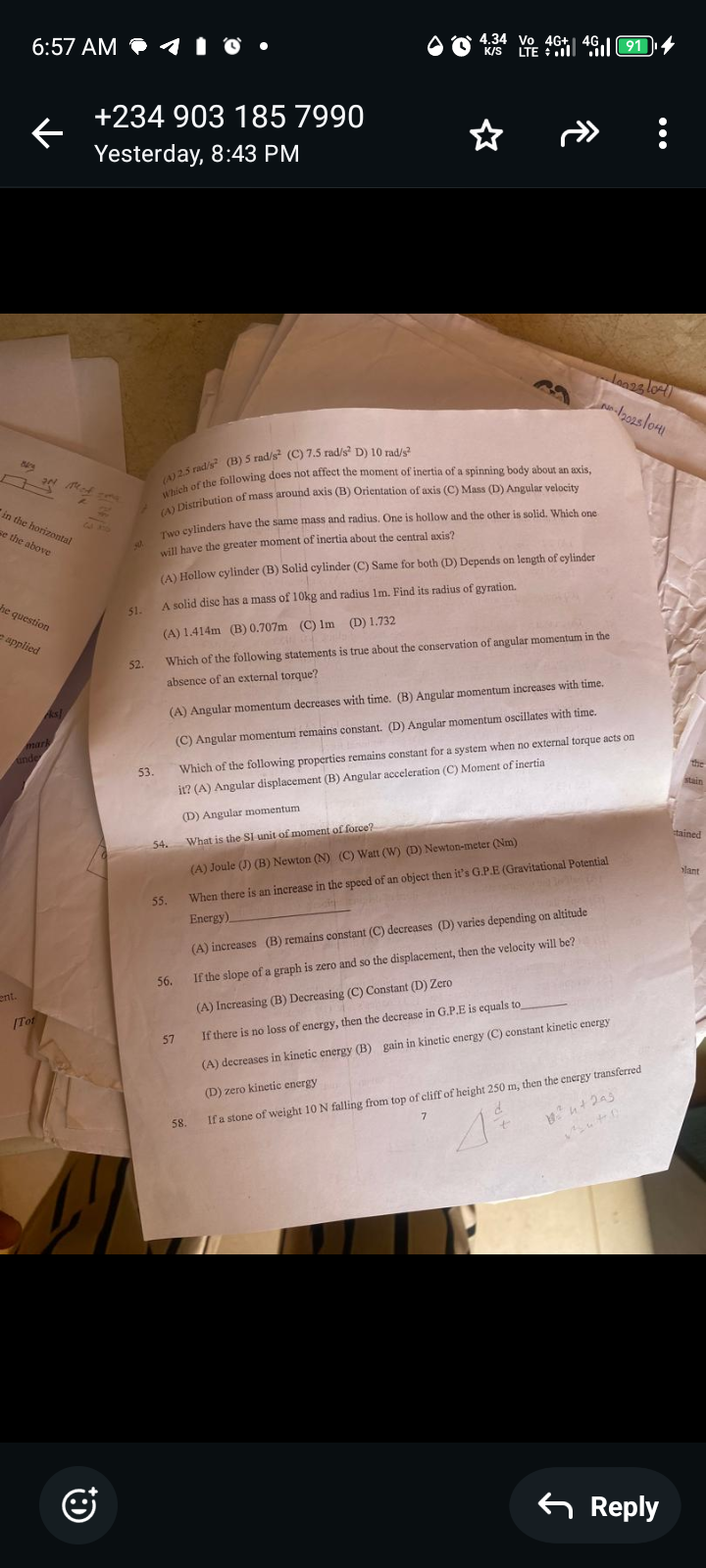Series of physics questions on topics such as moment of inertia, angular momentum, units of force, gravitational potential energy, and energy transfer.

Understand the Problem
The image contains a series of multiple-choice physics questions, likely from a homework assignment or exam. The questions cover topics such as moment of inertia, angular momentum, units of force, gravitational potential energy, and energy transfer.
Answer
50. D 51. A 52. B 53. C 54. D 55. D 56. D 57. D 58. B 59. 2500J
- D
- A
- B
- C
- D
- D
- D
- D
- B
- 2500J
Answer for screen readers
- D
- A
- B
- C
- D
- D
- D
- D
- B
- 2500J
More Information
Here's a brief explanation for each answer:
- Moment of inertia depends on mass distribution and axis orientation, not angular velocity.
- Hollow cylinders have a greater moment of inertia because their mass is distributed further from the axis.
- Radius of gyration (k = \sqrt{\frac{I}{m}}) . For a disc, (I = \frac{1}{2}mr^2), so (k = r/\sqrt{2} = 1/\sqrt{2} \approx 0.707) m.
- In the absence of external torque, angular momentum is conserved.
- Angular momentum remains constant when no external torque acts on the system.
- The SI unit of moment of force (torque) is Newton-meter (Nm).
- GPE varies depending on altitude. Increase in speed does not directly affect GPE.
- If the slope of a graph is zero and so the displacement, then the velocity is zero.
- If no energy is lost, the decrease in GPE equals the gain in kinetic energy.
- The energy transferred is equal to the change in potential energy mgh = 10N * 250m = 2500J.
Tips
Ensure you understand the definitions and units of each physics concept.
Sources
- Ch. 10 Conceptual Questions - College Physics | OpenStax - openstax.org
- Angular Momentum and Its Conservation | AP Physics C - Fiveable - library.fiveable.me
- 9.3 Dynamics of Rotational Motion: Rotational Inertia - pressbooks.bccampus.ca
AI-generated content may contain errors. Please verify critical information